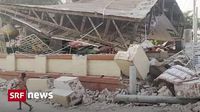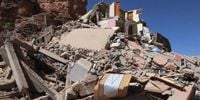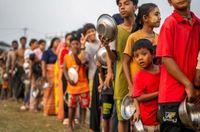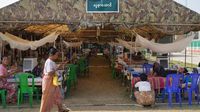On March 28, 2025, a powerful earthquake measuring 7.7 on the Richter scale struck large parts of Southeast Asia, with its epicenter located in the Sagaing region of Myanmar, just a few kilometers outside the city of Mandalay. The tremors were felt across neighboring countries, including China and Thailand, but the impact in Myanmar has been particularly devastating.
Foreign earthquake experts estimate that the death toll in Myanmar alone could rise to over 10,000 as rescue operations conclude. The situation is dire, exacerbated by an ongoing civil war between the military junta, known as the State Administration Council, and the National Unity Government of Myanmar, which is made up of ousted lawmakers and parliamentarians.
In response to the disaster, the government of St. Gallen, Switzerland, has allocated an emergency aid contribution of 30,000 francs to the Glückskette, a Swiss charity organization. This funding aims to support immediate relief measures in Myanmar. The Glückskette has established partnerships with several Swiss aid organizations, including Ärzte ohne Grenzen (Doctors Without Borders), Caritas, HEKS, Helvetas, Save the Children, and Terre des Hommes, to facilitate rapid and targeted aid despite the challenging conditions on the ground.
These organizations, although affected by the earthquake themselves, are mobilizing to provide essential supplies such as water, food, and hygiene products to those in need. As the situation evolves, the St. Gallen government is also considering further contributions to bolster these efforts.
Meanwhile, the United Nations High Commissioner for Refugees (UNHCR) has launched an emergency aid plan to support approximately 1.2 million survivors of the earthquake, with a funding requirement of around 16 million dollars. Since the earthquake struck, UNHCR has successfully delivered relief supplies, including plastic tarpaulins and kitchen sets, to supply around 25,000 people in the affected regions.
UNHCR is actively mobilizing additional relief supplies already stored in Myanmar to assist another 25,000 individuals. However, the agency warns that to meet the overwhelming demand, stockpiles must be replenished, especially in areas that have been affected by conflict and displacement for the past four years. The need for these supplies is critical for those who have lost everything, as local markets remain partially non-operational.
In the wake of the earthquake, UNICEF reported that relief supplies flown in from Copenhagen, including medicines and tents, are intended for children and families in need. The regional director for East Asia and the Pacific, June Kunugi, emphasized the catastrophic impact of the devastation on these vulnerable populations. UNICEF had already begun distributing life-saving supplies such as antibiotics, painkillers, rehydration salts, water purification tablets, and hygiene kits from its warehouses immediately after the earthquake.
Caritas Switzerland has also reported that local partner organizations have initiated their aid efforts on the ground. In the severely affected regions of Mandalay and Sagaing, they are providing food, drinking water, materials for emergency shelters, and cash assistance to enable self-help.
However, the delivery of aid remains challenging due to destroyed infrastructure and ongoing conflict. Reports indicate that while the military junta agreed to a ceasefire until April 22, 2025, to facilitate earthquake relief, it has already broken this ceasefire multiple times, leading to continued hostilities.
One week after the earthquake, the death toll continues to rise, and survivors are in urgent need of assistance. Zaw Kyaw, spokesperson for the exile government of Myanmar, known as the National Unity Government (NUG), called for increased pressure on the military junta to allow humanitarian aid to flow freely. He stated, "The time is running out, and the search and rescue operations are almost over. Now is the time to focus on humanitarian aid for the survivors and affected people. It doesn’t matter where they live or who they belong to; they are people in need of help."
Zaw Kyaw highlighted the critical situation, noting that the collapse of water supply systems has led to a spike in diarrheal diseases, with the threat of epidemics like cholera looming. The NUG declared a unilateral ceasefire for humanitarian forces one day after the earthquake, but the military has reportedly violated this ceasefire 16 times according to UN figures.
As the international community responds to the crisis, Zaw Kyaw urged for coordinated actions to ensure that aid reaches those who need it most without being obstructed by the junta. He emphasized that the humanitarian situation must not be exploited for political or military advantage.
In conclusion, the aftermath of the earthquake in Myanmar presents a grave humanitarian crisis that requires immediate and sustained international support. The complexities of the ongoing conflict add layers of difficulty to the relief efforts, but organizations like UNHCR, UNICEF, and local partners are striving to provide essential aid to those affected. The need for a unified international response to pressure the military junta is more urgent than ever, as the survival of countless individuals hangs in the balance.







